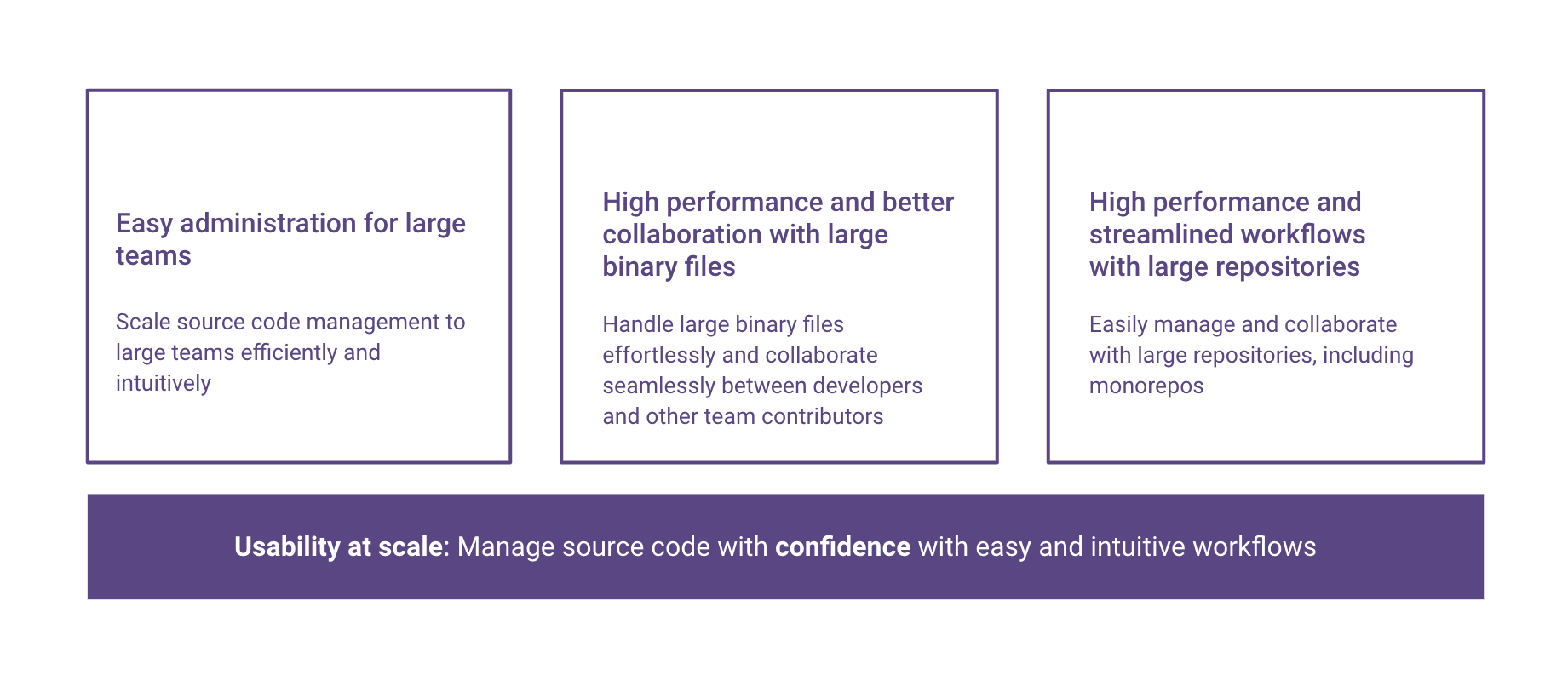The following page may contain information related to upcoming products, features and functionality. It is important to note that the information presented is for informational purposes only, so please do not rely on the information for purchasing or planning purposes. Just like with all projects, the items mentioned on the page are subject to change or delay, and the development, release, and timing of any products, features or functionality remain at the sole discretion of GitLab Inc.
| Stage | Create |
|---|---|
| Maturity | Loveable |
| Content Last Reviewed | 2025-01-28 |
Thanks for visiting the category direction page on Source Code Management. The Source Code Management direction page belongs to the Source Code group of the Create stage, and is maintained by Marie-Christine Babin.
This direction page is a work in progress, and everyone can contribute:
Source Code Management (SCM) is a foundational practice in software development. Building great software depends on teams working well together. Teams can rarely be divided into areas of complete independence.
GitLab's vision for Source Code Management is the following: Managing code and data with GitLab is a practice that ultimately sparks collaboration between all team members, by centralizing the sharing and synchronization of both code and data securely, efficiently and intuitively, regardless of the file type or size, making it easy to track, compare and revert changes and understand how code and data evolves over time.
This vision stands in support of GitLab's mission to make it so everyone can contribute. Teams in industries such as game development, automotive, healthcare, engineering, construction and architecture, and teams working with datasets in machine learning, have dependencies on code and data being tightly coupled to be able to iterate efficiently. As per our GitLab values, we believe iteration enables results and efficiency. Facilitating collaboration for teams iterating with both code and data will help them iterate with less friction, enabling them to achieve results more efficiently.
In support of GitLab's vision for Source Code Management, our strategy is to enable scale across team management, repository size and file size. This strategy stands on 3 strategic pillars and one foundational pillar:

~Note: SCM is not only the most used function in GitLab but also the one with the longest history as it has been there from the beginning. As a result, we get a lot of feedback and have a long backlog of issues. Therefore, we need to spend a considerable share of our teams’ capacity on issues that are not at the center of this vision but address bugs, stability, security, and scalability to keep our users and customers happy.~
GitLab's Source Code Management builds on top of Git. Git is the leading Version Control System (VCS). It excels at tracking changes in source code and makes it easy and transparent to merge changes from different developers into one code base. Yet, neither Git nor GitLab SCM are perfect. Here are the current main shortcomings:
Feature Enhancements
blame.ignoreRevsFile)UX Improvements
Performance & Reliability Improvements
In Progress: Reusable Rapid Diffs Architecture
Diffs are at the center of the code comparison within GitLab. We're working on a new architecture for diffs that improves performance and allows us to build more features on top of them.
Branch rules for Merge Methods
Introducing more flexible merge method options to support a variety of workflows is a critical pillar in source code management. We're evaluating how to introduce more flexible merge method configuration as well as exploring related work to improve fast-foward merges and make squashed merges more straighforward.
Commit signing for GitLab UI commits on GitLab.com: We are planning for the rollout of commit signing for GitLab UI commits on GitLab.com now that the feature has been delivered for Self-Managed and GitLab Dedicated. Once this is introduced, we will support signing web commits and automated commits made by GitLab for all GitLab.com projects.
Provide support for internal projects with other teams:
Other important issues recently delivered by the group can be seen in this list.
The Source Code group is not investing in the following opportunities in the immediate future:
BIC (Best In Class) is an indicator of forecasted near-term market performance based on a combination of factors, including analyst views, market news, and feedback from the sales and product teams. It is critical that we understand where GitLab appears in the BIC landscape.
This information is maintained on this internal handbook page
This information is maintained on this internal handbook page
This information is maintained on this internal handbook page
This category is currently of Loveable maturity level (see our definitions of maturity levels.
All GitLab users use the Source Code category. The more intensive users are the following: